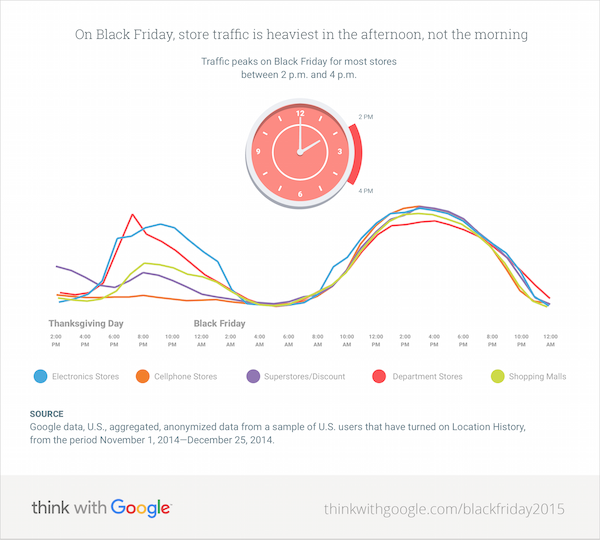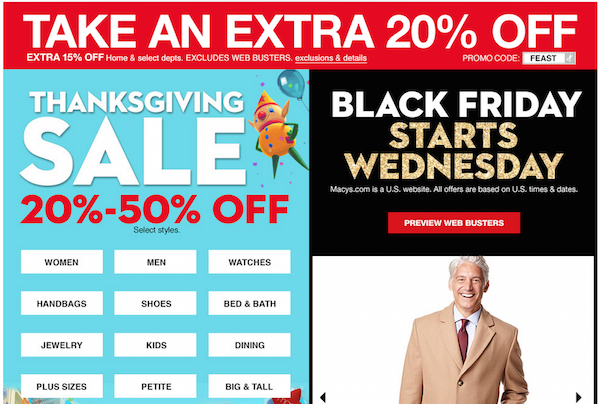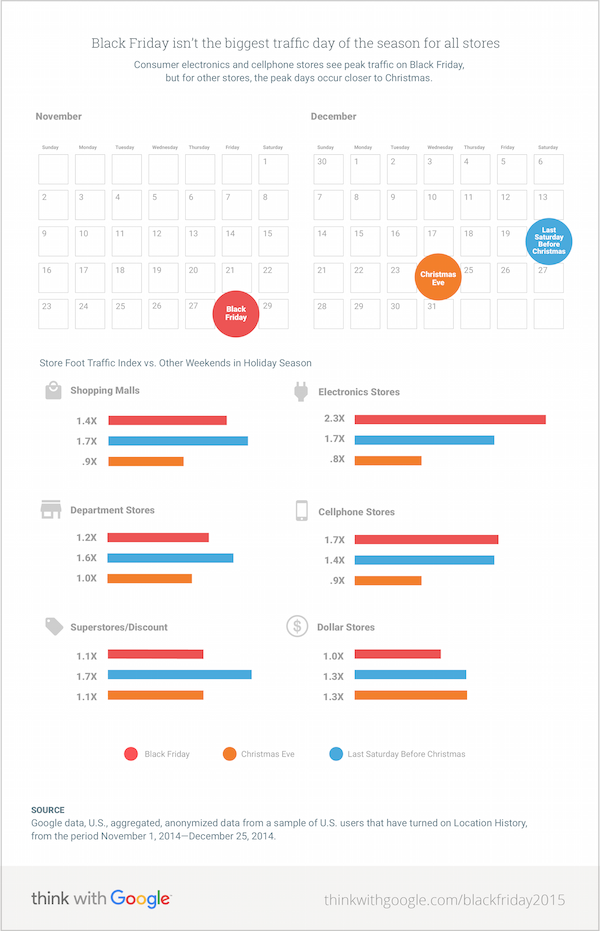What are the busiest times for stores on Black Friday?
If you want to avoid the crowds on Black Friday, avoid shopping between 2pm and 4pm. At least, thats what Google's location data says.
If you want to avoid the crowds on Black Friday, avoid shopping between 2pm and 4pm. At least, thats what Google's location data says.
If you want to avoid the crowds on Black Friday, avoid shopping between 2pm and 4pm. At least, thats what Google’s location data says.
Google has released some location data in advance of Thanksgiving and Black Friday, showing footfall peaks for retail stores.
As we can see below, traffic to all types of stores peaks mid-afternoon. Patterns are very different on Thanksgiving Day though. Not every store opens then, and the peaks are for electronics and department stores.

There is the question of whether Black Friday is good for retailers. In the UK, it only became a big event in 2014, and retailers have expressed a desire to play it down this year. Not that it’s likely to happen.
It essentially squeezes retailers’ margins by forcing them to squeeze their discounting into a couple of days. The extra traffic and demand also adds pressure to websites, systems, and the ability to ship goods on time. forcing them to devote extra resources for this period.
Many retailers are responding with attempts to extend the Black Friday discount period to spread the load.
For example, Walmart is offering pre-Black Friday specials:

Meanwhile, Macy’s starts its Black Friday sale on Wednesday:

It’s not all about Black Friday though. While Black Friday is the main event for any electronics and cellphone retailers, the peak foot traffic days are closer to Christmas for others.

The data also underlines the importance of mobile for multichannel retailers, as customers use their smartphones to find the best deals while they’re shopping.
Mobile searches per user were 11% higher in electronics stores and 8% higher in department stores on Black Friday last year compared to other weekends during the holiday season.
This suggests that people are doing plenty of showrooming and comparison shopping while out and about.
Google has a couple of tips for advertisers.

In addition to Google’s advice, the increasing use of mobile for offline shopping reinforces the importance of local SEO and local optimization in general.
Retailers should, of course have mobile-friendly websites, but they also need features which help out offline shoppers, such as the ability to check stock levels and reserve items for in-store collection.